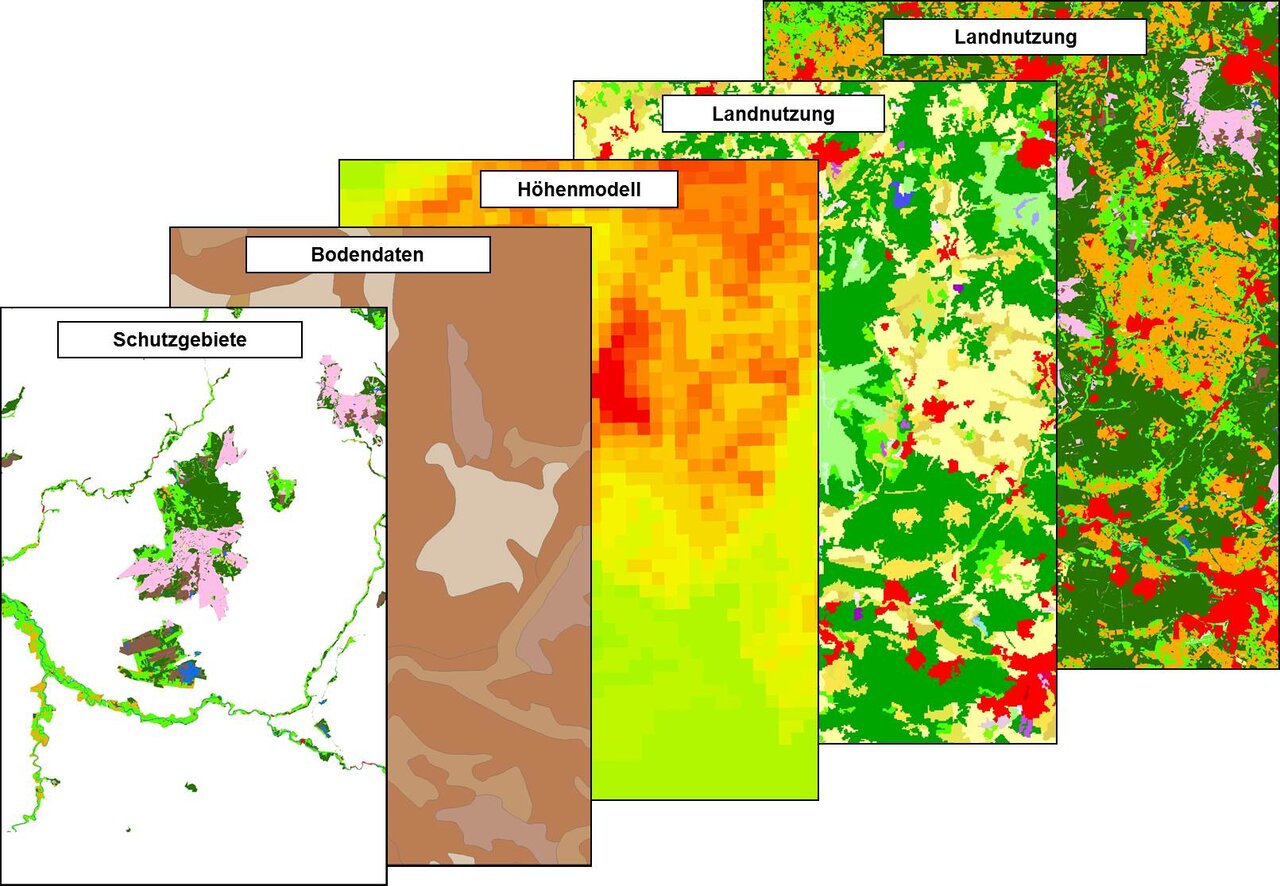Project
Thünen Agricultural-GIS

Thünen Agricultural-GIS for Germany
The Thünen Agricultural GIS creates the conditions for describing and analysing Germany's agricultural land use. Georeferenced data from the agricultural and environmental sectors are available for a very efficient time series analysis and are continuously expanded and updated.
Background and Objective
Data describing land use, natural site characteristics and environmental legal territorial settings are collected and made available by various institutions in the Länder. Within the framework of the Thünen Agricultural GIS, data describing land use on agricultural land is compiled. This includes, for example, data on soil properties, protected areas under nature conservation law, water and flood plains or biodiversity.
GIS-based analyses of agricultural land use for Germany are only possible if these data are compiled in advance of an area-based evaluation by various federal and state institutions and integrated into a GIS system. The aim of the project is to integrate various agricultural, natural and environmental data from land use, soil and climate data to farm data into a uniform GIS. This allows the analysis of land use to be carried out on the basis of a uniform and continuously maintained data infrastructure, even over different periods of time.
Approach
The following steps are necessary so that a consistent data set can be created in the Thünen agricultural GIS:
- Request and obtain approval for data access to specialised data from various authorities and institutions at federal and state level.
- Intersection of the technical data with a 10*10 metre point grid developed at the Thünen Institute for Rural Areas (over 3.5 billion data points) as a method for database management and intersection of very large GIS data sets
- Development of a meta-information system on the properties of the data sets and rights of use
- Compliance with data protection requirements through processor- and project-specific assignment of rights
- Intersection and linking of different data sources
Data and Methods
To create and use the agricultural GIS, various agricultural georeferenced technical data are compiled and processed at the Thünen Institute. These data are then documented and stored in the Agricultural-GIS database. The technical data are intersected with other technical data and analyzed in their spatial characteristics and their change tendencies over different time series.
Preliminary Results
The agricultural GIS serves both to fulfill permanent tasks in the field of policy advice or emissions reporting and to process various third-party funded projects dealing with the evaluation of agricultural land use more efficiently. An example of this is the superior project Greening or the Thünen agricultural atlas.
Thünen-Contact

Involved Thünen-Partners
Duration
Permanent task 6.2016
More Information
Project status:
ongoing
Publications to the project
- 0
Haensel M, Scheinpflug L, Riebl R, Lohse EJ, Röder N, Koellner T (2023) Policy instruments and their success in preserving temperate grassland: Evidence from 16 years of implementation. Land Use Pol 132:106766, DOI:10.1016/j.landusepol.2023.106766
- 1
Röder N, Laggner B, Osterburg B, Schmidt TG (2016) Grassland: quantification of the environmental services provision. Grassl Sci Europe 21:684-686

![[Translate to English:] [Translate to English:]](/media/_processed_/2/0/csm_LV_Bei_Hornburg_Quelle_Johanna_Fick_neu_da89674833.jpg)
![[Translate to English:] [Translate to English:]](/media/_processed_/2/0/csm_LV_Bei_Hornburg_Quelle_Johanna_Fick_neu_3aae309567.jpg)




